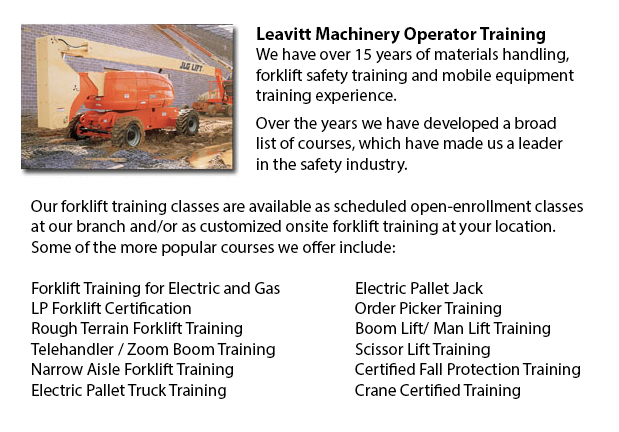
Boom Lift Safey Training Avondale - Boom lifts fall under the kind of aerial lifting device or elevated work platform. Most normally utilized in warehousing, construction and industry; the boom lift is so versatile that it can be used in practically whichever environment.
Elevated work platforms allow personnel to access work places that would be inaccessible otherwise. There is inherent danger in the operation of these devices. Workers who operate them must be trained in the correct operating procedures. Preventing accidents is paramount.
The safety factors which are involved in boom lift operation are covered in our Boom Lift Training Programs. The course is best for those who operate self-propelled elevated work platforms and self-propelled boom supported elevated work platforms. Upon successful completion of the course, participants will be given a certificate by somebody qualified to confirm finishing a hands-on evaluation.
Industry agencies, local and federal regulators, and lift manufacturers all play a part in providing information and establishing standards so as to help train operators in the safe use of elevated work platforms. The most essential ways in avoiding accidents connected to the utilization of elevated work platforms are as follows: checking machines, having on safety gear and conducting site assessment.
Important safety considerations when operating Boom lifts:
Operators need to observe the minimum safe approach distance (or also called MSAD) from power lines. Voltage could arc across the air to be able to find an easy path to ground.
A telescopic boom must be retracted prior to lowering a work platform in order to maintain stability as the platform nears the ground.
Boom lift workers must tie off to ensure their safety. The lanyard and safety contraption should be connected to manufacturer provided anchorage, and never to other poles or wires. Tying off may or may not be necessary in scissor lifts, that depends on specific local rules, employer guidelines or job risks.
The maximum slope will be specified by the manufacturer. Workers should avoid working on a slope, if possible. When the slope is beyond recommended conditions, the lifting device should be winched or transported over the slope. A grade could be measured with no trouble by laying a straight board or edge of at least 3 feet on the slope. Next a carpenter's level could be laid on the straight edge and raising the end until it is level. The per-cent slope is attained by measuring the distance to the ground (the rise) and dividing the rise by the length of the straight edge. After that multiply by one hundred.
-
Forklift Certification Courses Avondale
Forklift Certification Courses Avondale - Forklift certification courses really help to be able to make sure that companies using forklifts, follow the local and regional rules. The drivers of the forklift need to go through forklift certification pr... More -
Manlift Certification Avondale
Manlift Certification Avondale - The Elevated Platforms and Manlifts Certification course helps to provide the required training on the work practices, safe operating procedures, rules and regulations regarding the daily activities for the operators... More -
Manlift Operator Training Avondale
Manlift Operator Training Avondale - The aerial lift or manlift is a specialized type of hydraulic platform that is intended to hoist a person vertically giving it an alternate name of a vertical personnel lift. These machinery are widely used for a... More -
Telescopic Training Avondale
Telescopic Training Avondale - Telescopic Handlers are a type of forklift, normally called telehandlers. This machine has been increasing in popularity because of its greater lift heights and its versatility. It is often preferred over the convention... More -
Heavy Equipment Training Avondale
Heavy Equipment Training Avondale - The two most common types of heavy equipment training are classed into the categories of equipment; equipment that is fashioned with rubber tires or those with tracks. The tracked vehicle are heavy duty equipment l... More -
Aerial Lift Train the Trainer Avondale
Aerial Lift Train the Trainer Avondale - The Aerial Lifts Train the Trainer Certification Program would teach trainers how to efficiently train operators in safe industrial mobile equipment operation. Trainers are provided with in-depth instruction a... More -
Overhead Crane Safety Training Avondale
Overhead Crane Safety Training Avondale - The overhead crane safety training program is meant to equip the operators with the right knowledge and skills in the areas of: crane safety measures, accident avoidance, materials handling, and stock and equ... More -
Heavy Equipment Training Schools Avondale
Heavy Equipment Training Schools Avondale - When choosing an operator training course, there are numerous heavy equipment training schools to select from. In order to ascertain the qualifications you would attain, it is very important to check some a... More

Forklift Training Avondale
TOLL FREE: 1-888-254-6157
Avondale, Arizona
forkliftcertificationavondale.com
Email Us
About Us


